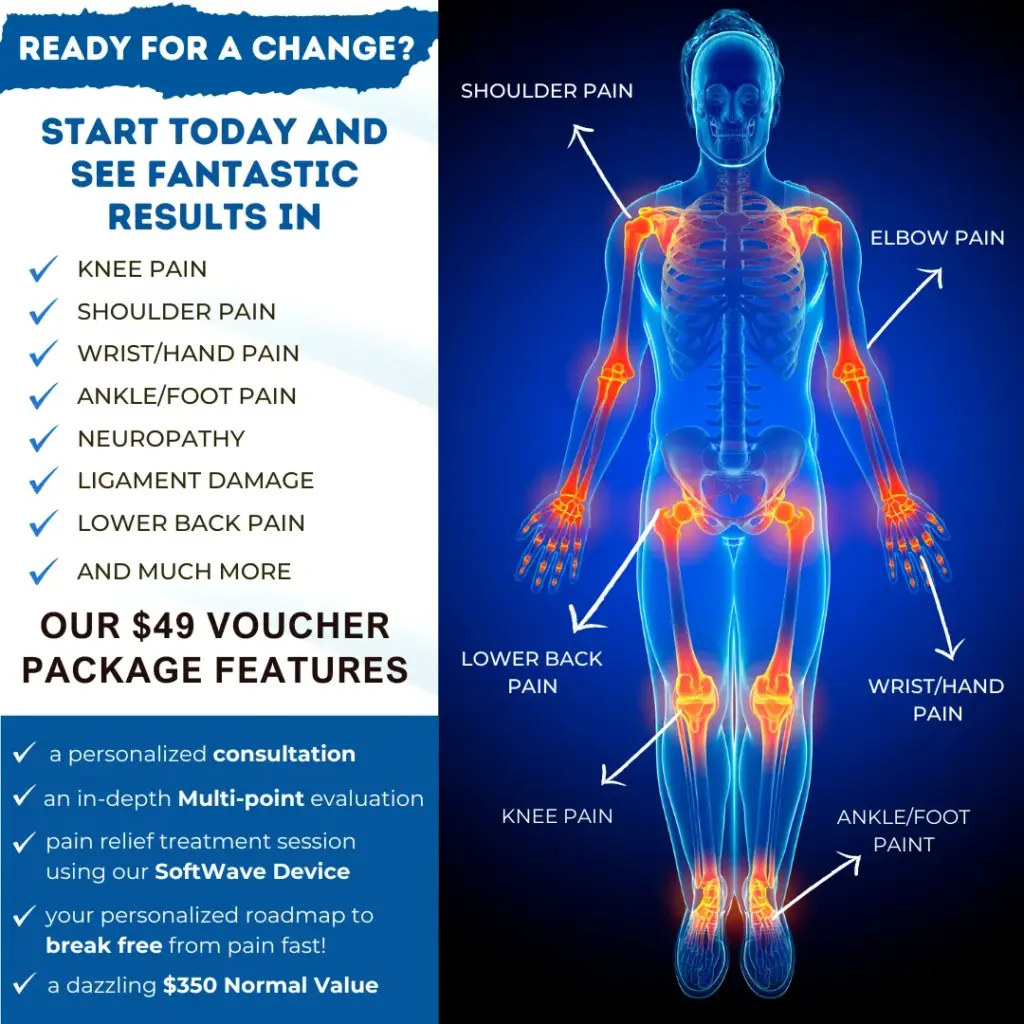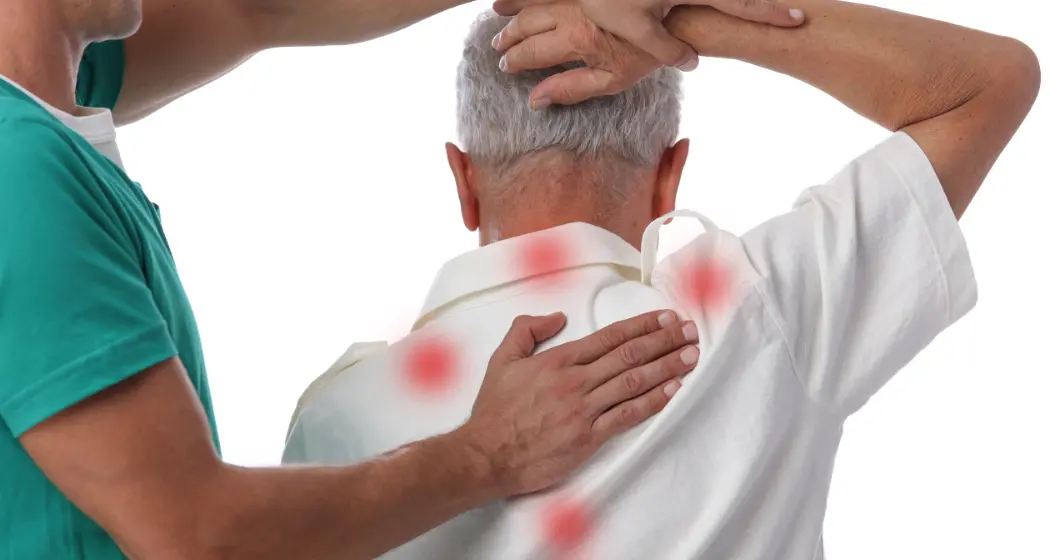Unlocking the mechanics of trigger point therapy reveals a fascinating approach to pain relief and muscle function enhancement. This therapy focuses on identifying and applying pressure to specific muscle knots, known as trigger points, which often cause myofascial pain and discomfort. Understanding the formation and treatment of these points can significantly relieve chronic pain and improve musculoskeletal health.
Key Takeaways
- Proper muscle analysis and working muscles in the optimal order are critical for the success of trigger point therapy and its wider adoption.
- Vibration techniques used in conjunction with trigger point therapy can enhance neuroplasticity, leading to more effective pain relief.
- Trigger points are not only palpable lumps in the muscle but also have unique referral patterns that can affect distant areas of the body.
- Research suggests that trigger point therapy can significantly reduce headaches and improve joint positioning by relaxing tight muscles.
- Although despite the known benefits, researchers still don’t fully understand the exact mechanisms behind trigger point therapy’s effectiveness, indicating a need for further research.
Understanding Trigger Points and Their Formation
Trigger points, linked to myofascial pain syndrome, are tight muscle fiber areas. In addition, they form due to overuse, injury, or stress. Palpable nodules form in taut muscle bands, known as trigger points. They can generate local or referred pain.
Defining Trigger Points and Their Characteristics
Trigger points can be broadly classified into two types: active and latent. Active trigger points cause discomfort or pain without external pressure. Latent trigger points don’t produce pain without pressure.
The characteristics of trigger points can be summarized as follows:
- Sensitivity to pressure or touch
- Referred pain to distant sites
- Restricted range of motion
- Local twitch response upon stimulation
Understanding these characteristics is crucial for effective diagnosis and treatment.
The Pathophysiology Behind Knot Formation
Trigger points, commonly referred to as muscle knots, are a perplexing phenomenon in musculoskeletal health. Additionally, It’s an area where a bump or knot forms in the tissues, sometimes causing intense pain. These knots are essentially segments of muscle fibers that remain in a contracted state, leading to a palpable nodule or bump. Moreover, the pathophysiology of these trigger points involves a complex interplay of factors that lead to their formation and persistence.
When muscle fibers remain stuck in contraction, they disrupt normal blood flow to the area. This results in a decrease in the delivery of essential nutrients and oxygen. Additionally, the accumulation of chemicals such as acetylcholine and calcium contributes to this hypoxic environment, causing the muscle fibers to spasm and form a knot. Moreover, the restricted circulation also prevents the removal of waste materials, further irritating the trigger point and exacerbating pain.
The excessive accumulation of chemicals and lack of oxygen in the area are key factors in the formation of trigger points.
The main causes of trigger point formation include direct trauma to the muscle, excessive and prolonged exercise without adequate recovery, poor posture, stress, fatigue, inactivity, and certain medical conditions. These factors can lead to the development of trigger points not only in muscles but also in tendons, fascia, periosteum, and ligaments. Addressing these underlying causes is crucial in the management and treatment of trigger points.
Factors Contributing to Trigger Point Development
The genesis of trigger points involves multiple factors, with muscle overuse and direct trauma often cited as primary catalysts. These factors lead to sustained, low-level muscle contractions, keeping certain muscles in a perpetual state of tension. Consequently, this constant activity disrupts the chemical balance within the muscle fibers, resulting in pain and localized contractures that suffer from inadequate oxygen supply.
- Direct Trauma
- Excessive and Extended Exercising
- Poor Posture
- Psychological Stress
- Physical Inactivity
- Underlying Medical Conditions
Psychological stress, in particular, can induce muscle tension and facilitate the formation of trigger points, exacerbating the cycle of discomfort and dysfunction.
Trigger points can emerge in any muscle and may affect multiple muscles simultaneously. Therefore, addressing these points through targeted therapy can be crucial. They are often the primary source of pain complaints, even in the presence of tissue damage or inflammation.
The Therapeutic Approach to Trigger Points
Trigger point therapy, a form of massage, targets specific areas of tension within the muscle, known as trigger points. Moreover, these points are often the source of myofascial pain and can refer discomfort to other areas of the body.. The primary principle of trigger point therapy is the identification and subsequent deactivation of these points serves to alleviate pain and restore optimal muscle function.
Principles of Trigger Point Therapy
- Identification of Trigger Points: The process begins with locating the sensitive spots within the muscle tissue that correspond to the patient’s pain symptoms.
- Manual Pressure Application: Therapists apply direct pressure to these points to relieve tension.
- Integrated Techniques: Therapists may incorporate other techniques, such as stretching and strengthening exercises, to support the release process.
- Trigger point therapy injections involve injecting a small needle directly into the trigger point. Additionally, Injections can be done with medications, homeopathic and natural products, saline and even dry needling.
Therapists target trigger points to interrupt pain cycles, enhancing blood flow and tissue oxygenation. This reduces pain and muscle spasm intensity..
Techniques for Trigger Point Release
Releasing trigger points is essential for addressing localized areas of muscle tension and pain. These methods aim to alleviate discomfort and restore muscle function. Ischemic compression, a common method, applies sustained pressure to trigger points, briefly reducing blood flow to relax muscles.
Another effective technique is passive stretching, which involves gently elongating the muscle to relieve the tension within the trigger points. Dry needling, a minimally invasive technique, sterile needles to stimulate and deactivate trigger points, alleviating pain and improving movement.
Trigger point therapy addresses pain relief and corrects muscle imbalances contributing to knot formation. By using soft tissue mobilization, therapists can help joints return to their proper position, significantly improving symptoms and muscle function.
It’s important to note that trigger points differ from acupressure points as they are palpable lumps within the muscle fibers. The table below summarizes some of the key techniques used in trigger point release:
The Role of Vibration in Enhancing Neuroplasticity
Integrating vibration into trigger point therapy is a sophisticated, highly effective technique when applied correctly. Properly used vibration tools can powerfully augment trigger point work, offering a unique approach to muscle normalization. Vibration, unlike aggressive methods, offers a neurological distraction, aiding muscle relaxation without discomfort or protective guarding.
To make therapeutic vibration truly effective, it is essential to follow a structured approach:
- Proper analysis of muscle conditions
- Selection of the right muscles
- Timing the application of vibration optimally
This methodical application ensures that the therapeutic benefits of vibration are maximized, leading to enhanced neuroplasticity and improved muscle function.
The use of vibration tools demands a nuanced approach, distinct from the simplistic ‘vibrate where it hurts’ strategy. However, it is this precision and understanding of muscle behavior that can lead to significant advancements in trigger point therapy.
Limited adoption of vibration techniques in trigger point therapy stems from a lack of sophisticated analysis. However, ongoing research and clinical experience unveil its potential. The IMPROVE study protocol examines mechanical oscillatory vibrations’ effects on post-stroke muscle areas, emphasizing strong proprioceptive stimuli.
Analyzing and Working the Musculature
Proper muscle analysis is crucial in trigger point therapy, as it determines the effectiveness of the treatment. The first key is working the right muscles in the optimal order. This complexity historically hindered trigger point therapy adoption. Addressing upstream muscles contributing to referral pain before treating the target muscle is essential. Considering its functional antagonists is crucial.
Strategies for Proper Muscle Analysis
To ensure a comprehensive approach, therapists often develop frameworks that guide the treatment process. These frameworks, rooted in extensive research, aim to identify key muscles in pain areas, their referral patterns, and functional relationships. Consequently, here’s a simplified example of such a framework:
- Identify the primary muscle or muscle group in pain
- Analyze upstream muscles for referral patterns
- Assess functional antagonists for imbalances
- Determine the sequence of muscle work
Even the most advanced tools, like therapeutic vibration, are only effective when used in conjunction with a well-informed muscle analysis.
Understanding the interlocking patterns of satellite referral and functional relationships is a cornerstone of effective trigger point therapy. This knowledge allows therapists to design treatments that not only alleviate pain but also promote recovery and resilience in the musculature.
Determining the Optimal Order for Muscle Work
When addressing trigger points, the sequence in which muscles are worked is crucial for effective therapy. Working the right muscles in the optimal order is the first key, often more complex in practice than in theory.. Proper muscle analysis guides therapists to focus on impactful areas first, optimizing time for maximum benefit.
The Hybrid Health Advanced Muscle Therapy Protocols suggest a treatment order that considers the best positions for each muscle, its functional unit, and the key muscles that should be addressed initially. These protocols are designed with decision points to assess and eliminate work on less relevant muscles, which is why clients often experience rapid results.
It’s of little use to put a lot of time into full treatment of a muscle until some attention has been paid to the upstream muscles that might be feeding referral into it, and we must always ensure that we’re attending to its functional antagonists as well.
Understanding the interlocking patterns of satellite referral and functional relationships between muscles is the result of extensive research and is integral to the development of effective treatment protocols. This strategic approach enables a more targeted and efficient therapy session.
Overcoming Challenges in Trigger Point Therapy Adoption
Adopting trigger point therapy into regular practice involves navigating several challenges. Proper muscle analysis is crucial; however, it is a skill that requires significant expertise and experience. Historically, the inability to perform sophisticated muscle analysis has been a barrier to the widespread adoption of trigger point therapy.
Another challenge is the effective use of vibration tools to enhance neuroplasticity. While vibration can powerfully augment trigger point work, it requires a nuanced approach beyond the simplistic “vibrate where it hurts” method. Understanding the referral patterns of trigger points is essential; for instance, pain in the anterior deltoid often originates from a different location, and treating only the area of perceived pain may yield only temporary relief.
The integration of trigger point therapy into clinical practice demands a shift in perspective and methodology, emphasizing the importance of a strategic and informed approach.
To facilitate the adoption of trigger point therapy, practitioners must focus on education and skill development in these areas:
Clinical Outcomes and Efficacy of Trigger Point Therapy
Recent studies have underscored the clinical effectiveness of trigger point therapy in managing myofascial pain. A randomized, placebo-controlled trial by Moraska et al. demonstrated a significant response of myofascial trigger points to targeted massage interventions. This responsiveness is not only pivotal in alleviating pain but also in restoring muscle function.
Research Findings on Trigger Point Responsiveness
Trigger points are often the primary source of pain, overshadowing direct tissue damage or inflammation. Their treatment, therefore, becomes a cornerstone in pain management strategies. The reduction of trigger point activity has been correlated with decreased headache frequency, as noted by researcher Albert Moraska.
The therapeutic manipulation of muscle fibers around trigger points is known to reduce pain and enhance muscle performance, although the exact mechanisms remain to be fully elucidated.
The table below summarizes key findings from various studies on trigger point therapy:
| Study | Outcome | Improvement |
| Moraska et al. | Trigger Point Release | Significant |
| Itoh et al. | Temporomandibular Disorders | Positive |
These findings underscore the potential of trigger point therapy as a non-invasive treatment modality for chronic pain and musculoskeletal disorders.
Impact on Pain Relief and Muscle Function
Trigger Point Therapy (TPT) has been a game-changer in the realm of pain management and muscle rehabilitation. It offers a non-invasive solution to alleviate pain and enhance muscle function, often yielding significant improvements in a patient’s quality of life. Moreover, the therapy targets specific areas of muscle fibers, usually around a trigger point, leading to decreased pain and improved muscle performance.
- Alleviates Pain and Discomfort: TPT reduces soreness from physical activity or stress, providing relief and comfort.
- Improves Mobility and Flexibility: By releasing muscle tension, TPT promotes better movement and reduces stiffness.
- Injury Prevention and Rehabilitation: It addresses muscle imbalances and promotes proper alignment, aiding in injury prevention and recovery.
The efficacy of Trigger Point Therapy extends beyond providing temporary relief, as it also plays a vital role in upholding overall health and well-being. Consequently, it stands as an essential component of muscle therapy.
Case Studies: Reducing Headaches and Improving Joint Position
Trigger point therapy has shown promising results in case studies focusing on reducing headaches and improving joint position. Significant improvements were noted in patients with chronic headaches, where trigger point manipulation contributed to a decrease in headache frequency and intensity. Similarly, joint position and mobility benefited from targeted trigger point treatments, enhancing overall musculoskeletal function.
Trigger point therapy not only addresses the immediate pain but also works to restore the body’s natural alignment and muscle balance, which are crucial for long-term relief and function.
In the context of temporomandibular disorders (TMD), which often manifest as headaches, a cross-sectional study highlighted a notable incidence of undiagnosed TMD in headache patients. The integration of trigger point therapy in these cases has been instrumental in providing relief and restoring function.
- Spinal Realignment: Alleviates discomfort from poor posture.
- Enhanced Joint Mobility: Improves function in neck, shoulders, and wrists.
- Reduced Muscle Tension: Relieves tight muscles and inflammation.
Expanding the Scope of Trigger Point Therapy
Trigger point therapy, traditionally associated with myofascial pain, has shown promise in addressing a wider spectrum of health issues. Furthermore, beyond the realm of musculoskeletal disorders, its applications extend to conditions like neuropathy, migraines, and even cerebral palsy.
Beyond Myofascial Pain: Broader Applications
The versatility of trigger point therapy can be seen in its integration with various treatment modalities:
- Massage Therapy: Enhances relaxation and circulation, complementing trigger point techniques.
- Clinical Neurology: Assists in managing nerve injuries and conditions such as sciatica.
- Functional Wellness: Supports overall health and can be tailored to individual needs, including dietary interventions.
- Regenerative medicine: Supports overall regeneration of tissue including muscle tissue, nerve tissue, cartilage and even bone tissue.
Trigger point therapy’s adaptability makes it a valuable tool in a holistic approach to health, capable of being customized to the unique challenges of each patient.
While the traditional focus has been on alleviating pain and improving mobility, the scope of trigger point therapy continues to expand as practitioners explore its potential benefits in various clinical scenarios.
Integrating Trigger Point Therapy with Other Modalities
Trigger Point Therapy (TPT) has been recognized for its effectiveness in managing myofascial pain and improving muscle function. However, its integration with other therapeutic modalities can enhance patient outcomes significantly. Combining TPT with techniques such as Osteopathic Manipulative Treatment (OMT), dry needling, trigger point injections, and specific exercises can create a synergistic effect, leading to more comprehensive management of conditions like chronic neck pain.
In practice, the integration process involves assessing the patient’s condition and determining the most beneficial combination of therapies. For instance, a patient with fibromyalgia might benefit from a combination of TPT and Craniosacral Therapy to address widespread tender points and release restrictions.
The strategic combination of different therapeutic approaches can address the multifaceted nature of musculoskeletal disorders, providing a more holistic treatment plan.
It is essential to tailor the therapy to the individual’s needs, taking into account factors, such as the location and severity of trigger points, the presence of co-occurring conditions, and the patient’s overall health status.
Future Directions in Trigger Point Therapy Research
As trigger point therapy continues to evolve, research is pivoting towards innovative approaches that could redefine its therapeutic impact. The integration of technology in treatment protocols is a promising area, with studies like the effect of Mirror Therapy on post-needling pain showing potential benefits. Additionally, researchers are delving into the synergistic effects of integrating trigger point therapy with other modalities, such as acupuncture and vibration therapy, to enhance outcomes.
Future studies are expected to delve deeper into the pathophysiology of trigger points, aiming to unravel the complex mechanisms that underlie their formation and responsiveness to treatment. This could lead to more targeted and effective interventions. Additionally, the role of patient education and self-care practices in sustaining the benefits of trigger point therapy is gaining attention.
The quest for evidence-based practices in trigger point therapy is driving a new wave of clinical trials and observational studies. These efforts are crucial in establishing the therapy’s efficacy and in expanding its application beyond myofascial pain to include broader health conditions.
With the growing body of literature, such as the work by Money and Moraska, the future of trigger point therapy research is poised to offer more nuanced insights into its clinical outcomes and efficacy. This will not only benefit practitioners and patients but also contribute to the broader field of pain management and rehabilitation.
Conclusion
In summary, trigger point therapy emerges as a nuanced and potent approach to alleviating myofascial pain. By understanding the intricate nature of trigger points—tight, contracted muscle fibers often mistaken for lumps—and employing targeted pressure techniques, therapists can effectively dissolve these knots, enhancing blood flow and oxygenation to the affected areas. The therapy’s success hinges on the correct identification and sequential treatment of the involved muscles, as well as the strategic use of vibration to foster neuroplasticity.
Also for more advanced or difficult to handle trigger points, trigger point injections are a safe alternative to massage and therapy. Despite the complexities involved in its application, the evidence, as discussed by experts like Sarah Money and Albert Moraska, underscores the therapy’s potential to significantly reduce pain and improve muscle function. As we continue to unravel the precise mechanisms behind trigger point therapy, its integration into pain management regimens holds promise for those suffering from chronic musculoskeletal conditions.
Frequently Asked Questions

What exactly are trigger points?
Trigger points are specific areas of tightly contracted muscle tissue that feel like lumps or knots. They can cause pain locally and in other areas of the body through referral patterns.
How does trigger point therapy work?
Trigger point therapy involves applying pressure, or injecting these knots to help them relax, increase blood flow, and oxygenate the area, which can alleviate pain both at the site of the trigger point and in referred areas.
What causes the formation of trigger points?
Trigger points can form due to muscle overuse, direct trauma, or sustained low-level muscle contractions that disrupt chemical balance and oxygen delivery, leading to muscle pain and contractures.
Can trigger point therapy reduce headaches?
Yes, trigger point therapy can reduce headaches, especially when trigger points in the shoulder and neck are treated, as they often refer pain to the head.
What role does vibration play in trigger point therapy?
Vibration is used to enhance neuroplasticity, which can help decrease pain and improve muscle function by disrupting the pain signals and promoting muscle relaxation.
How does trigger point therapy differ from acupressure?
While both involve applying pressure, trigger point therapy specifically targets muscle knots that are palpable and often cause referral pain, whereas acupressure focuses on points along energy meridians.
If you have more questions or are interested in learning more about trigger points please contact. Waters Edge medical Clinic and Spa at 727-550-0855.
Or if you are suffering with pain or discomfort and would like to schedule a consultation with us please click on the link listed below.


